On a bright, sunny winter’s morning I made my way to Victoria Coach Station and hitched a ride out to Stansted. An Italian guy in the seat behind me spent the entire journey conducting a series of loud phone conversations, the only saving grace being that I couldn’t understand his wittering due to my unenviable status as a Stone Age monoglot.
I checked in for my Ryanair flight and killed a few hours basking in the sunshine – sunglasses in February! – and perusing the shops. (I found Easy Riders, Raging Bulls on DVD and a Bic Runga CD, both for ₤2). Shuffling through the endless security queues I managed to spot an abandoned €5 note crumpled on the floor, so I decided that was ample reward for enduring the wait.
At the gate I was able to observe the modern-day class structure of low-cost flying: there were two boarding queues, one for regular passengers and another for those who had chosen to pay a few quid more to secure early boarding and thereby early seat choice, because the seats on Ryanair flights are unassigned. I permitted myself a brief moment of jealousy, but then realised that I’d rather have my few quid than join the priority club. As Groucho Marx once said, “I wouldn’t join any club that would have me for a member”. Oh wait, that doesn’t make my point, does it? In any case, I passed the time being entertained the chaotic gambolling of two little girls in the queue who were going to Spain with their mother to stay with their grandparents. To prove their European credentials, the mother spoke to them in Spanish and they replied in middle-class English.
Ryanair’s cabins are garishly decked out in blue and yellow, with advertising hoardings on the overhead lockers and Irish voiceovers offering cheap spirits and lottery scratch-cards. (As Rob Brydon’s hoary old ‘Peter de Lane’ in ‘Directors Commentary’ would say, “Hello C2s! Just back from the off-licence and settling down with a chip butty to watch the greyhounds on ITV, are you?”). After a 2 ½ hour flight only enlivened by the lingering question of whether the dozing guy next to me would fall on top of me, the 737 arrived in Jerez de la Frontera, and I stepped onto the tarmac on a mild Andalucian evening. Andalucia – the mysterious Al-Andalus!
I shared a cab into town with a couple from Bristol who were down for a week to watch the motorcycle racing. The night-time streets of Jerez seemed wealthy and tidy, with plenty of bright neon signs advertising the local sherry manufacturers, many of which have English names, there having been substantial English investment in the trade here since the 1830s. Roundabouts and plazas are marked with pyramids of sherry barrels. The taxi nosed down one-lane cobble-stoned back streets until I was eventually dropped off at my accommodation for the night – the Hotel San Andres, with two lovely open courtyards filled with rustling palm trees and pot-plants. I retired to my plain but tidy little room and drifted off to sleep, looking forward to a busy week.

Sun 17 February – Jerez to Cadiz
After a good night’s sleep I awoke to the sound of heavy rain on the roof, but I still decided to venture out to explore Jerez before my train to Cadiz. It being a damp Sunday morning, the orange-tree lined streets were deserted. I headed for high ground and inspected the walls of the town’s Alcazar, the 11th and 12th century Islamic fortress, before strolling past a statue to the founder of the Bodegas Gonzales Byass, which produces the famous Tio Pepe sherry. Then I struggled to take pictures of the town’s 18th century cathedral and its 15th century belfry – the rain and wind were making things difficult. After a little more exploring I returned to the San Andres to dry out, with my shoes completely soaked through. Having obtained solace from a delicious €1 cake from a minuscule convenience store, I then made my way to the train station for the 11.40am train to Cadiz.
The spotlessly-clean and modern train whisked me to the Atlantic coast through flat marshlands dotted with abandoned farm cottages, their roofs long salvaged for scrap or caved in. I found my hostel not far from the station – Casa Caracol is a slightly ramshackle place with a bohemian air: my highly-trained detective eyes spotted a communal guitar in a corner and the small label on the front desk mentioning that “if you’re checking out before 10am, sort it out the night before, because we won’t be awake at that hour!”
Dumping my pack in my dormitory, I went exploring Cadiz in between the rain showers. Once a wealthy port profiting from the South American bullion trade, Cadiz is still a working port, but the grandeur has faded somewhat. In part the city has struggled because it’s hemmed in on all sides – the peninsula of land it lies on is full, the city streets are narrow and labyrinthine, and the nearby coastal land is swampy and unproductive. But Cadiz is still bustling, and the remnants of its famous annual Carnaval, which had finished a week before, were still evident. Before siesta time the streets were full of locals thronging around groups of performers singing popular Andalucian folk songs, often while wearing extravagant costumes – I rounded one street corner and came face-to-face with a stout middle-aged Spanish Elvis, decked out in a Las Vegas spangly jumpsuit.
I explored the Museum of Cadiz, which displayed an excellent range of archaeological exhibits from the long history of the city, ranging back to a bulky pair of stone coffins (here’s a sketch of the male one) dating back to the ancient Phoenician settlement at some time between 1100BC and 800BC. There was also a high-quality photographic exhibition by photographer Emilio Morenatti, who was once kidnapped in Gaza (for a day). The exhibition showed his photos from Palestine and Afghanistan. A particular favourite was the image of three hardy Afghan women in full chador outfits, riding in the boot (trunk) of a rickety sedan with a plank of wood propping the boot open. I wished there was a way of seeing if the back seat was either (a) full of men, (b) full of livestock, or (c) empty: an Afghan woman’s place is in the boot. Upstairs there was an exhibit of old string puppets: knights, priests, Moors, Don Quixote, and several old paddle-steamers, illustrating Cadiz’s maritime connections.
After a snack to replenish my batteries, I entered Cadiz’s imposing cathedral, which had taken over 100 years to complete by the time it was finished in 1838. Inside the cathedral is spacious and eerily quiet, but as it was constructed at a time with the American bullion was drying up, it lacked the baroque grandeur of greater structures.
I rounded out the day with a stroll along the sea wall at the head of the peninsula, before gathering showers forced me back into the shelter of the hostel. It turned out I was sharing my dormitory with an eclectic mix of travellers: a middle-aged Yorkshire woman who was searching for cheap digs in which to practice her weaving, an Estonian girl who worked as a steward on the Tallinn to Helsinki fast ferries, and a Polish girl with industrial quantities of makeup, who charmingly wished me “a good tripe” (i.e. trip). Can’t cast aspersions on her pronunciation though: it’s not as if I know any Polish other than Na Zdrowie!
Mon 18 February – Cadiz to Sevilla
As the sign had warned, the hostel was dead to the world when I got up. The rain had cleared up, and I made my way back to the station for the nearly two hour trip back up the line to Sevilla (Seville). Only cost €10 too – I shudder to think what the price would’ve been for a similar one-way trip in the UK. I quickly made my way to the Plaza de la Encarnacion and found the Oasis hostel, a lively but modern and well-equipped place. Then I was able to renew my acquaintance with the tasty Spanish bocadillo chain known as Pans and Company – I’d enjoyed their fare in Madrid in 1997, so it was good to see they’re still around.
Sevilla is clearly a wealthy city. I passed a couple of street vendors selling ashtrays made from intricately cut and folded soft-drink cans, but that glimpse of earthiness was overwhelmed by the impression made by the multitude of boutique shops in the many pedestrian alleys, by the riches on display in the Cortes Ingles department stores, by the ultra-modern trams that glide through the broad central arcades and plazas, and by the profusion of beautiful buildings at the old centre of the city. Despite being an inland city up the Rio Guadalquivir, Sevilla was named puerto y puerta de Indias – the port and gateway of the Indies – during the Spanish imperial period, and reaped rich rewards from the privilege.
The most distinguished embodiment of this civil wealth is Sevilla’s truly remarkable cathedral – a vast edifice of devotion and display that was completed in 1507 just at the outset of Spain’s grand imperial phase. I spent nearly two hours basking in the architectural glories – the five naves and soaring arches mark out a massive expanse of marble, wood and stained glass, arranged to perfection. The truly stunning gleam of the gold High Altar is particularly memorable. The only distraction from the grandeur of the scene was the workmen using a skillsaw at the other end of the cathedral, which you can hear in the video!
In pride of place in one nave a memorial statue consisting of four august mourners bearing aloft a coffer draped in regal colours. This is the resting place of the remains of the legendary explorer Cristobal Colon (that’s Christopher Columbus to us Anglophones). The remains were brought from Cuba in 1899 and interred here in 1902, although the identity of the bones inside the coffer is open to debate. When he died in 1506 Columbus could hardly have imagined that his journeys to the New World would change the course of global history in such a profound and lasting fashion, and spawn sovereign nations, famous universities and even space shuttles named in his honour.
I emerged from the cool dim light of the cathedral into the blazing sunshine outside, pausing briefly to admire the surreal sight of a replica of a crocodile chained to the roof of the cloisters, the original reptile having been a gift from the Sultan of Egypt to Alfonso X. Afterwards I spent a few hours rambling through the pedestrian-friendly streets of Sevilla, and ended up navigating back to the hostel by recognising displays of outlandishly garish flamenco dresses in shop windows. Bright blue and yellow polka dots? Must be a right turn.
Tues 19 February – Sevilla
Oh dear, a lousy night’s sleep with plenty of dormitory noise through the night due to the late-partying guests. I made a beeline for the Alcazar to get there before the hordes of tourists… oh, like those two dozen Germans in the queue in front of me. The centre of power and authority for Sevilla’s Muslim rulers since the 9th century, which was later expanded by Christian rulers, the Alcazar is another massive structure at the heart of the city, with rambling palaces punctuated by serene gardens studded with orange trees and babbling fountains. The heart of the Alcazar’s beautiful Almohad chambers is the Salon de Ambajadores, a throne room with intricate and ornate wall decorations and a neck-straining half-dome wooden ceiling added in 1427, showing off a dizzyingly complex star-pattern effect that would surely have dazzled high-ranking visitors to the palace.
Underneath the palaces lie the Maria de Padilla Baths in a vault carved out of the solid rock. I managed to capture a time-lapse picture before being driven away by the clamour of several dozen Spanish primary-age schoolchildren being ushered down into the vaults, their chattering threatening to render me deaf and more than usually irritable.

Following a walk through the huge gardens of the Alcazar, I traipsed back into the real world, and in my examination of Sevilla’s shops I formed the highly rational theory that the decline of the Spanish empire was not caused by the long-term financial crisis brought about by the end of the influx of New World bullion, but rather by the expense of maintaining an astonishing numbers of two particular types of shop: those selling flamenco dresses, and those selling baby clothes. (Obviously the flamenco dress shops also sold flamenco dresses for babies; what did you expect?) Part of the reason for the prevalence of babywear shops is that Spanish women have their babies in their later 30s, and by that time they have fewer babies and more money to spend on decking their little nino or nina in top-flight pint-sized fashion.
In the afternoon I visited the Archivo General de Indias – since 1785 it’s been the main archive for all the imperial paperwork that flowed back from Spanish America. It had an interesting (albeit entirely en Espanol) exhibit on the life of explorer and conquistador Hernan Cortes, and several other exhibits on colonial life, including the yellowing correspondence from the earliest Spanish explorers of the Americas, dating back nearly 500 years.
Later I enjoyed visiting the excellent Museo de Belles Artes (no pictures allowed), which had some superb religious sculptures including one of the Virgin Mary that had a small wooden door in her chest with its own lock and keyhole. Handy place to keep your mobile, if you happen to have a door in your chest. There was also a skilful, if macabre, sculpture of the head of John the Baptist. The artist had gone to a great deal of trouble to work out the anatomically correct depiction of a severed head stump. (Thanks for that, Mr Artist).
The evening’s retail-based navigation back to the hostel was aided by the sight of a shop offering flamenco kitchen aprons and flamenco washing-up gloves. I think the latter might have been intended to be ironic.
Weds 20 February – Sevilla to Cordoba
After a better night’s sleep than the night before, I packed up and took a bus up to the train station to do battle with the RENFE train schedule. I soon found out that there wasn’t a regular train to my destination, Cordoba, for three hours – so I had to shell out for a more expensive ticket on the AVE fast train that links Sevilla to Madrid. Travelling on fast trains is always fun though – ground-level jet travel, sitting back in your armchair while the countryside whips past the windows in a constant blur. They doled out free headphones to listen to the inflight audio channels, but it was a strange feeling to be hurtling over the Spanish plains under lead-grey skies whilst listening to the RENFE music selection, which consisted of Creedence Clearwater Revival, Barry White, Status Quo and Toto (‘Hold The Line’, not ‘Africa’, fortunately).
After discovering that Google Maps can struggle with precise directions and as a result spending half an hour roaming the narrow streets of Cordoba, I asked a couple of postal workers where my hotel actually was, and after locating it, I ditched my pack and set out to explore. A hundred kilometres upstream along the Guadalquivir from Sevilla, old Cordoba is centred around the sprawling rectangular grounds of the mysterious Mezquita, the site of a mosque since the eighth century. Expanded by later rulers, the Mezquita is a tantalising glimpse at thousand-year-old architecture – ringed by stern high walls punctuated by ostentatious iron-studded gateways and semi-circular carved stone arches on the outside, and a serene expanse of paving stones and orange trees open to the skies inside. Within the walls, half of the Mezquita is devoted to open space, and half to a covered prayer hall. Unfortunately the later Spanish rulers decided to consecrate the site by building a cathedral in its midst, but the Mezquita is still a powerful symbol of the glories of pre-Christian Andalucian architecture.
I also found time to investigate Cordoba’s other historic sites, including its fine city walls to the west of the Mezquita. Nearby stands a statue of the famous Roman philosopher and dramatist Seneca, who was (maybe, possibly, we're not certain) a local boy here when the Romans ruled Iberia.

Elsewhere in the town I found statues to other local heroes of antiquity such as Averroes and Maimonides. Up the hill near my hotel archaeologists have reconstructed a Roman temple’s tall Corinthian columns, which now tower over a quiet suburb. And the river itself is still crossed by a Roman bridge, although it’s been restored so many times over the years that there’s probably nothing left of the original structure. I also visited the Archaeological Museum, which turned out to nearby my hotel. It had a strong collection of Roman statues in its courtyard, including a buff torso from an oversized statue of Romulus, and inside there was a delightful pottery jug from 900 years ago – an Al-Andalus courtly scene of musicians in turbans playing for the nobles.
After yet more walking I returned to the hotel and watched a little Spanish TV, checking out ‘Hijos de Babel’, a Pop Idol programme for foreigners living in Spain.
Thurs 21 Feb – Cordoba to Granada
I slept particularly well in my comfortable bed and revelled in the peace and quiet after a few days in hostel dorms. But the many kilometres of walking on Cordoba’s cobble-stoned streets the day before had wrecked my left foot, the heel of which was throbbing from overuse. (Perhaps I’d spent the day walking in circles). I took one last circuit through Cordoba, hobbling purposefully around to take a few pictures, including this one near the river, with the Episcopal Palace on the left and the corner of the Mezquita on the right:
Then it was time to make my way to the station on the outskirts of town for my coach to Granada. Cordoba seemed to be shutting down for a big cycle race, but unfortunately I had to be on my way. The coach journey was uneventful, enlivened only by a blithe semi-retired couple who took turns to eat dry rice crackers or tortilla chips extremely slowly and extremely loudly – one bite at a time, the noise ringing out like a whip-crack. They managed to keep this act up for two hours! Naturally I wished I’d brought my iPod along, but in its absence I fixed my gaze on the rolling hill country passing the coach windows, dotted with vines and yet more abandoned farmhouses. I think it was prosperous terrain; they just don’t seem to mind leaving a property abandoned.
I arrived in Granada at 3pm and made my way to the Oasis hostel, the sister establishment of the place I’d used in Sevilla. On first impression Granada seemed a bit more drab than Sevilla and not as historic as Cordoba – but on the plus side there were at least a few black faces on the streets. I had begun to wonder if there were any Africans in Spain at all. A heavy downpour hit the city in the late afternoon and batches of young African immigrants dashed out to the street corners to offer armfuls of cheap Chinese umbrellas for sale. The city streets were bedecked with a multitude of tiny lottery ticket booths (one with a little puppy gambolling around its tiny interior to keep the salesman company) or just vendors standing next to metal easels with dozens of tickets bulldog-clipped to them.
I returned to the hostel, avoiding the dog mess and nursing my aching foot, and read my guidebook until it was time to venture back into town for a tasty kebab dinner. Later I chatted to an enthusiastic young Australian guy who’d just spent three weeks visiting friends in Morocco. Too honest-looking to be a drugs mule, I reckoned! There was time for a quick timed-exposure looking out over the Granada rooftops from the hostel roof patio outside my dorm to round off the day.

Fri 22 Feb – Granada
It turned out to be a better night’s sleep than I’d expected – perhaps my fellow dorm occupants arrived back so late from their night’s revels that it was just about time for me to get up anyway. Down in the kitchen I chatted to a German girl who was working part-time in the hostel between university studies. I think her job was to just hang around and look stunning, and she seemed quite capable of pulling this off, in a Teutonic ubermodel sort of way.
As part of my exploration of Granada I paid a visit to the Capilla Real (Royal Chapel), not far from the hostel. Completed in 1521, it serves as the mausoleum of their most Catholic Majesties King Fernando and Queen Isobel, who liked themselves to be remembered as the scourge of the Muslims. No photography was permitted inside, but I was impressed with the marble monuments to the rulers, and not a little creeped out by the sight of their plain lead coffins, which were on view directly underneath the monument, down a small flight of steps. Don’t worry, there was no regal coffin leakage as far as I could see. In the adjoining sacristy there were displays of Fernando’s sword, robes and crown, and Isobel’s childhood playthings and rosaries. A small collection of paintings included a beautiful little Botticelli.
Then I visited the city’s Archaeological Museum, which was free despite my valiant attempts to pay the massive €1.50 fee. (Museums in Spain are often free to EU citizens, so I must’ve looked English enough). I enjoyed seeing the collection of Roman stone burial markers, a 15th century astrolabe and crossbow, and a life-sized Roman bronze statue of an important-looking gent in a toga. This picture shows off a Roman breastplate, which shows the style set in the movie 300 was still in vogue a few centuries later:

Then I slogged up the steep streets of the Albaycin suburb to gain a view eastwards over the high walls to the Alhambra, and southwards across whole city. On the way back down I chanced upon a marvellously psychedelic collection of graffiti art decorating a concrete stairway – a true work of urban art:


There was also one slightly less refined piece of graffiti outside the city’s cathedral, that I spotted once I’d returned from my walk - having fended off the Roma women trying to sell sprigs of 'lucky' heather. Juvenile, but it made me snicker:

Sat 23 Feb – Granada to Almeria
I breakfasted early and checked out, leaving my backpack to collect later. The main objective of the morning was my eagerly awaited visit to the Alhambra, which I had booked weeks before. The Alhambra was the fortress palace of the Granada emirs, and was built overlooking the city atop a high flat spur with sheer cliffs on three sides. I walked up the steep street to the entrance gate, passing a batch of guitar-making shops and numerous other small shop selling tourist fare. The day was overcast and a little chilly, but then it was still officially wintertime.
Soon enough I was inside the Alhambra walls and investigating the Palacio Nazaries, the 14th-century Muslim palace that is the heart of the Alhambra. Unfortunately despite the limits on the number of tickets issued, it’s hard to get a feel for the spaciousness and serenity of the design, but the intricacy of the craftsmanship that produced the beautiful carved wooden ceilings and stone window arches was impossible to ignore. All it needed was some typical Spanish sunshine to cast some pretty shadows to liven up the pictures. It’s not hard to close your eyes and imagine the spectacle as it would’ve been in the 14th century, with delicate fountains filling long clear reflecting pools in graceful patios decorated with shining coloured tiles and solid engraved doors.

The highlight of the Palacio from my perspective was the tremendous domed ceiling of the Salon de Comares, which has 8000 cedarwood pieces. Nothing like setting your camera on the floor facing upwards and letting it do the work, I say:

I also took in the spectacular views from the ramparts of the Alcazaba, the fortress adorning the tip of the plateau – the whole of Granada was laid out below.
Elsewhere in the Alhambra I enjoyed an exhibition of 19th century photography of the palace and citadel by a French photographer who helped popularise the site amongst the Paris intellectual set. (British and American readers of the time would’ve probably been drawn to Washington Irving’s famous ‘Tales of the Alhambra’ (1832), which you can read here). I also visited the city Art Museum inside the Alhambra, and noted the skill that went into four 17th century statues of saints, and the opulent beauty of a 15th century Spanish ‘Virgin and Child’.
On the way out I strolled through the winding paths of the Generalife pleasure gardens, admiring the fountains, the topiary, and the sleepy inhabitants:
Then it was time to go. While I had enjoyed my visit to the Alhambra, I felt as if it would’ve been far more enjoyable if the weather had been fine (which in Spain is more likely than not) and if there’d been less of a crowd enjoying it with me (which is unavoidable, sadly). Overall, I think the Alcazar in Sevilla was more of a highlight, because the colours of its wall paintings have survived in a much healthier condition than in the Alhambra, which was abandoned for decades in the early 19th century.
Next stop was Almeria on the coast, so I boarded a regional train that tilted around the bends in the track like a jetboat as it cruised at 120km/h. Most of the journey was through dusty farmland, although in one valley the scenery was enlivened south of Guadix when the railway passed through the largest windfarm I’ve ever seen. There must have been 200 colossal turbines dotting the landscape.
I’d booked a cheap hotel close to the train station in Almeria, so it was easy to locate it and spend a few hours exploring. The thing is, Almeria’s not really a tourist destination, and I struggled to find anything interesting in my brief time there. The only noteworthy occurrence was when I ambled down a side street and found myself following in the wake of a curious procession of two dozen bodybuilders carrying a massive iron platform on their heads. It was like some peculiar form of torture, but they seemed to be enjoying themselves. The drivers of the cars caught behind them were remarkably composed, I thought.
Finally, I succumbed to the lure of junk food and treated myself to McDonalds. A local kid was having his noisy birthday party there, and the staff had kindly written his name on a special birthday sign for the evening. Back at the hotel I watched the Oscars countdown on Spanish TV, with much associated hoopla for their hero, Javier Bardem, and a live satellite feed from the red carpet set-up in Los Angeles, where the pretty young Spanish reporter gave a breathless account of how electric the atmosphere was, and how everyone was on tenterhooks. A lot was left to the imagination though, because the camera footage merely consisted of builders wielding big rolls of gaffer-tape and electricians fixing lighting rigs.
Sun 24 Feb – To London
It was an early bus ride to the airport at Almeria for my Monarch flight to Luton, and while it did wander seemingly aimlessly through the semi-industrial hinterland of Almeria, it did get me there eventually for just one euro. It was soon obvious that I was back in the company of the English: in the departure area a pot-bellied middle-aged taxi-driver read his Sunday Mail, a bleached-blonde woman strode past in gold-painted Ugg boots, and sitting across from me a young couple with clipped consonants downed plastic beakers of beer. At ten in the morning. Ah England!
Another Monarch jet was shortly to depart to Manchester, and our departure was delayed by 15 minutes when the Spanish gate staff allowed two inattentive couples to board the wrong flights. This despite the boarding announcements being clearly read out in English. After numerous frantic re-counts by the stewardesses on my flight, an elderly couple realised they were on the wrong plane and got off; their seats were soon taken by a red-faced couple who’d boarded the Manchester plane, thinking it was heading to Luton! The mind boggles.
Soon enough I was back in Southfields and the trip was at an end. Andalucia was an ideal destination for a week’s winter break. I suggest you drop in the next time you’re in the neighbourhood. Just remember to double-check your flight details before the plane takes off!
eT

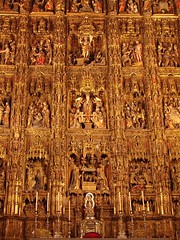

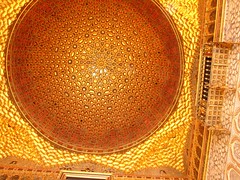
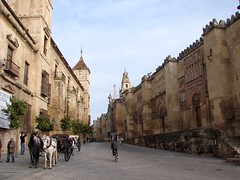
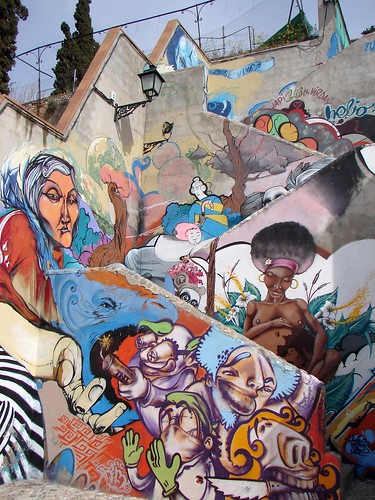
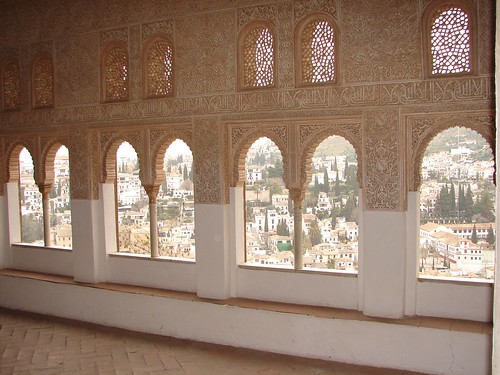
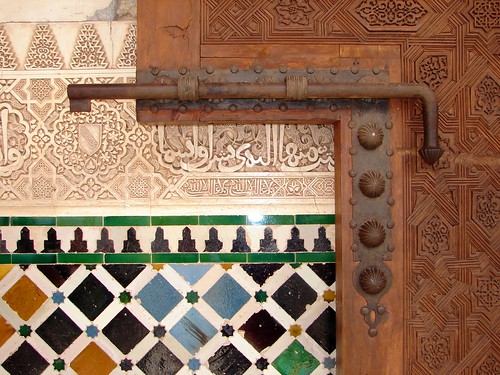
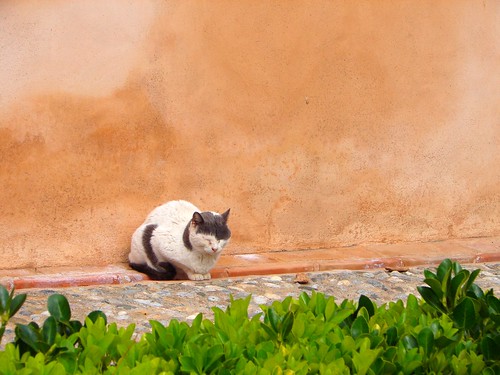
No comments:
Post a Comment